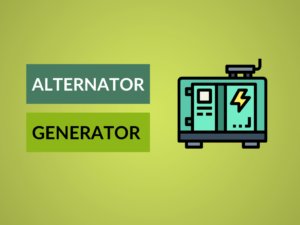The Difference Between Electromagnets and Permanent Magnets
Introduction:
Magnets have always been curious objects that have fascinated humans since ancient times. They have played a significant role in various industries and our daily lives, contributing to numerous technological advancements. The two primary types of magnets are electromagnets and permanent magnets. In this article, we will explore the differences between these two types of magnets and their various applications.
What is an Electromagnet?
An electromagnet is a type of magnet that is created by passing an electric current through a coil of wire. When the electric current flows through the wire, it generates a magnetic field around it, transforming the coil into a magnet.
Examples of Electromagnets:
Electromagnets can be found in various devices and machines we encounter in our daily lives. Some common examples include:
- Magnetic Lifters
- MRI Machines
- Generators
- Solenoids
- Door Locks
Uses of Electromagnets:
Due to their ability to control and modify the strength of their magnetic field, electromagnets find applications in various fields:
- Industrial Manufacturing
- Transportation (Trains, Vehicles)
- Medical Equipment
- Electrical Appliances
- Research & Development
What is a Permanent Magnet?
A permanent magnet is a magnet that generates its own persistent magnetic field. Unlike an electromagnet, it does not require an external electric current to maintain its magnetic properties. Permanent magnets are made from materials that exhibit ferromagnetism, such as iron, cobalt, nickel, and certain alloys.
Examples of Permanent Magnets:
Permanent magnets can be found in a variety of objects and devices. Some common examples include:
- Refrigerator Magnets
- Hard Drives
- Magnetic Jewelry
- Speakers
- Electric Motors
Uses of Permanent Magnets:
Permanent magnets have a wide range of applications owing to their inherent magnetic properties:
- Electronics and Telecommunications
- Renewable Energy (Wind Turbines)
- Automotive Industry
- Medical Devices
- Magnetic Separation
Differences Between Electromagnets and Permanent Magnets:
| Difference Area | Electromagnet | Permanent Magnet |
|---|---|---|
| Production | Produced by passing current through a coil of wire | Occurs naturally and is not induced by an electric current |
| Magnetic Strength Control | Magnetic field strength can be adjusted by varying the current | Cannot be easily adjusted after production |
| Source of Magnetism | Generated by the flow of electric current | Materials with inherent magnetic properties |
| Power Requirements | Requires a continuous flow of electric current | Does not require any external power source |
| Lifespan | Dependent on the durability of the wire and power source | Generally has a longer lifespan |
| Magnetic Field Persistence | Magentic field disappears when the current is turned off | Retains its magnetic field even without an external power source |
| Applications | Uses include industrial manufacturing, transportation, and medical equipment | Widely used in electronics, renewable energy, and automotive industries |
| Size and Weight | Can be designed to be compact and lightweight | May be heavier and larger |
| Magnetic Field Control | Can be turned on and off by controlling the electric current | Always exhibits its magnetic field |
| Cost | Costs may include the materials, wires, and power source | Generally less expensive |
Conclusion:
In summary, electromagnets and permanent magnets differ significantly in their production, power requirements, lifespan, magnetic properties, and applications. Electromagnets are created through the flow of electric current and find uses in a wide range of industries, while permanent magnets are naturally occurring and exhibit long-lasting magnetic fields. Understanding these differences is crucial in selecting the right type of magnet for specific applications.
People Also Ask:
- What is the main difference between an electromagnet and a permanent magnet?
- Which one is stronger, an electromagnet or a permanent magnet?
- Can you turn off an electromagnet?
- Do permanent magnets have a limited lifespan?
- What factors determine the strength of an electromagnet?
The main difference is that electromagnets require an electric current to generate a magnetic field, while permanent magnets have their own inherent magnetic properties.
Electromagnets can be stronger than permanent magnets as the strength of an electromagnet’s magnetic field can be adjusted by varying the electric current.
Yes, you can turn off an electromagnet by interrupting the flow of electric current.
Permanent magnets do not have a limited lifespan as long as they are not exposed to strong external magnetic fields or excessive heat.
The strength of an electromagnet depends on the number of wire turns, the current flowing through the wire, and the core material used.


